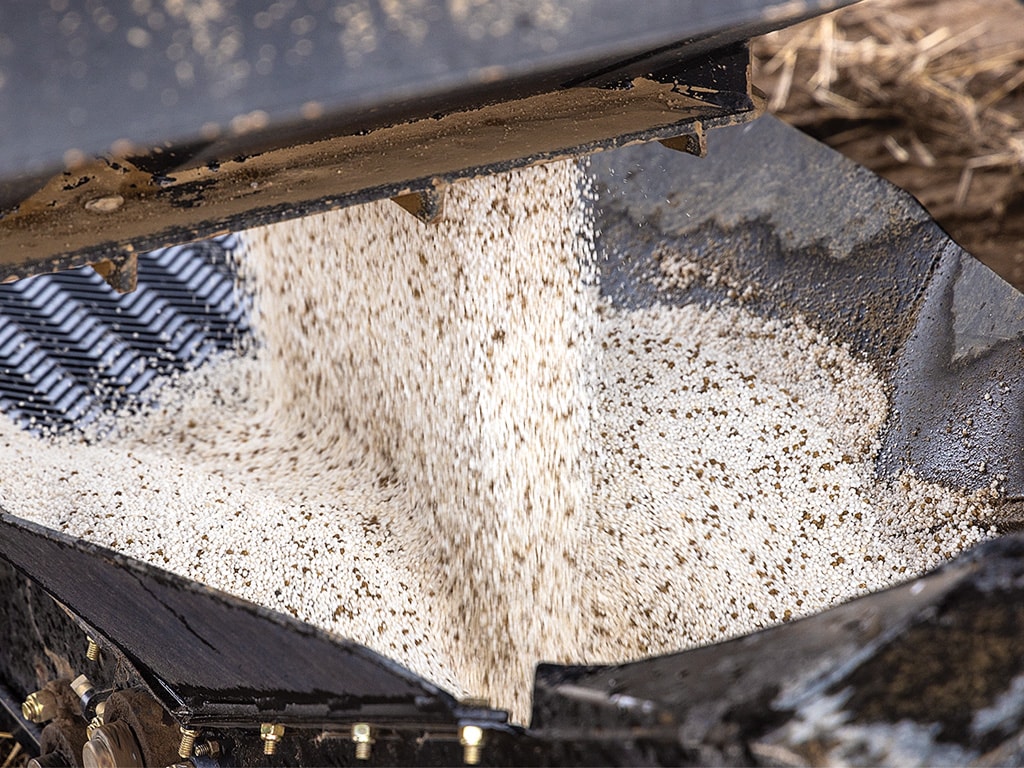Agriculture, Farm Operation November 01, 2024
Fill Up and Go
Plan ahead to cut filling down time.
by Lorne McClinton
In IndyCar racing the difference between finishing first and second is usually less than a blink of an eye. The gap is barely a second in most instances. While drivers get all the credit for victories, the glory really should be shared with the pit crew. Ideally from the time the car comes to a halt in the pit area it should take just 7 seconds for the six-person crew—four people on wheels, a jack person, and a fuel person—to change all four tires and fill up the 18.5-gallon fuel tank. If just one of them flubs their job it can easily be enough to knock their car out of contention.
Filling your air drill, planter, or sprayer during the planting or spraying season is nowhere near as time critical as IndyCar pit stops are. However, it can easily make the difference between whether you can finish a field or not before the weather changes.
"If we are just doing a quick fill, with no maintenance, and no snags, a two-man crew can do a fill-up and the drill will be back seeding again in half an hour," says Rob Stone from Davidson, Saskatchewan. "If we're doing a full pit stop with fuel, grease, topping up the canola seed, as well as filling up with nitrogen and phosphorus, then we're probably going to be looking at 45 minutes to an hour."
Typically, Stone's seeding crew's goal is to seed 500 acres in an 18-hour day with their single 84-foot air drill. They can plant somewhere between 30 and 50 acres per hour and stop to refill four times a day.
Above. Typically Rob Stone’s seeding crew can do a quick refill in 30 minutes, a full refill with maintenance can take anywhere from 45 minutes to an hour as long as everyone knows what they’re supposed to do.
Two minutes an acre. It's hard to nail down an exact across-the-farm number because there are so many variables. The type of crop, the variable rate prescription, field size, field terrain, and the amount of turning that's required all have an impact. But using the 30 acres per hour, every two minutes that can be shaved off their four fill times translates into four extra acres that they can plant in a day. If they can average 30-minute refills, instead of 60-minutes, it allows them to plant an extra 120 acres a day. That starts to add up if Mother Nature kindly gives you a 10-day seeding window.
Normally Stone's seed crew manages with just the operator and one other person. Having an extra person on hand takes a little bit of stress off the operator and gives them a few moments to stretch and relax. That way they aren't in a blind panic scrambling up and down the air cart and running back and forth to reposition trucks. For the same reason, if another worker happens to be nearby picking rocks or something, they're expected to stop what they're doing and lend a hand. Getting the drill rolling again as quickly as possible is the priority.
Stone says being open to conversations with the planting crew and listening to their ideas about how to make the fill-ups more efficient can pay big dividends. Simple things can make a difference. For example, one of his workers came up with the idea that instead of just randomly guessing or using a five-gallon pail as a target for positioning trucks, why not measure out the exact distance for optimal fills. He suggested tying a wood block to a length of rope to mark the exact distance the semi must be from the air cart to fill it.
Being organized really helps. Stone hasn't gone as far as keeping roving vans stocked with parts on standby like some farms do. But they do make sure all the trucks are queued up ready to go with enough product on board for complete fills. This reduces the odds they'll run short and have seeding grind to a halt as they run back to the yard for more.
When it's time for complete fills, it's important that everyone is on the same page and clear about what they are supposed to be doing. Who's filling, who's fueling, who's greasing and who's checking all the air hoses? Stone says fill-ups aren't times for workers to be standing around visiting with each other.
Being organized is also critical when it comes time to refill the sprayer. For Stone that primarily comes down to ensuring the sprayer operator has enough water on hand. They recently purchased a water tanker in addition to their mix trailer so they start the day with 14,000 gallons of water on hand in the field.
"The clock is ticking," Stone says. "There is a task on hand that needs to be done. I don't want people to be running around and I don't want a bunch of safety violations. We just want to be as efficient as possible, and I think everyone is on board with that." ‡
Read More

AGRICULTURE, SPECIALTY/NICHE
The Seed Man
Quebec farmer works tirelessly to popularize unknown heirloom crop varieties.

AGRICULTURE, EDUCATION
Farm Tour Master Class
Don't call it tourism, these visitors get an ag education.



